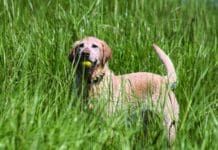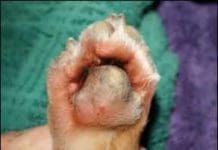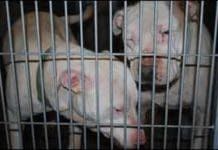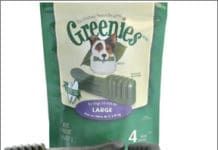Home Search
raw%20dog%20food - search results
If you're not happy with the results, please do another search
Holistic Care for Dogs with Addison’s Disease
While treatment of Addison's disease focuses on prescription drugs and electrolyte tests, holistic veterinarians add various support therapies to help their patients. Nutrition is the cornerstone of every holistic therapy, and while diet cannot cure Addison's disease, foods made of poor-quality ingredients or diets that lead to nutritional deficiencies are a significant source of stress, and additional stress is just what Addison's dogs don't need. Because wheat, corn, and soy are problem ingredients for some dogs, many holistic veterinarians recommend avoiding them. Some tell their clients to avoid grains altogether.
Addison’s Disease in Dogs: Detection and Treatment
Somethings wrong with your dog but youre not sure what. She seems listless, her eyes have lost their spark, and she just seems off. You might notice intermittent muscle weakness, tremors, and an inability to jump into the car or onto a sofa. Or your dog frequently ignores her dinner, vomits, or has diarrhea. These vague symptoms, which may improve and then return, could stem from a dozen canine illnesses or they might point to Addisons. Addisons disease, named for the 19th century physician who defined this adrenal gland dysfunction, is also known as hypoadrenocorticism or adrenal insufficiency. While fatal if left untreated, with appropriate treatment Addisons can be managed so that affected patients lead normal, active lives. First diagnosed in dogs in the 1950s, it is considered an uncommon canine disorder.
Identifying and Treating Skin Conditions that can Affect Your Dog
Yikes! What happened to Fido’s nose? And what’s wrong with Fluffy’s paw pads? The possibilities are many, and a surprising number of nose and paw pad problems are related. Because illnesses in this category often have similar or identical symptoms, a veterinarian’s diagnosis can be important. The following overview will help you identify, prevent, or treat these disorders. The most frequently asked questions about dogs’ noses concern color. Dogs have black or dark noses and paw pads because of melanin, a pigment that darkens skin. When melanin production slows or stops, the skin lightens uniformly or in patches. The term nasodigital refers to both nose and toes. A thickening of the outer layer of skin (hyperkeratosis) at the edges of the nose or paw pads can develop into painful cracks, fissures, erosions, and ulcers.
Why are so many abused dogs so forgiving?
I was in my local shelter one day last week when a couple brought in two intact male pit bull-type dogs. Both dogs were white, which made it easy to see how filthy dirty they were – and to see the wounds that each of them had. The larger, overweight dog had what may have started as a sunburn and developed into a dermatological condition. But the younger, smaller dog had truly ghastly wounds on his hind legs; it looked as if he had been tied up (or even hung) by ropes around his hind legs.
Detecting Canine Anal Sac Problems
Anal sacs are located on either side of your dog’s anus, between the external and internal sphincter muscles. Depending on the dog, they range in size from that of pea to a lima bean. Sebaceous glands within the lining secrete a foul-smelling liquid. Under normal circumstances, the sacs empty on their own during bowel movements via a pair of ducts. This natural, routine emptying serves as a means of olfactory communication and establishing territory. Each dog possesses his own unique scent, which is why ritualized dog-to-dog greetings include copious rear-end sniffing. When a dog presents his rear for information gathering, the muscle movements involved in raising the tail apply pressure to the sac, prompting the release of additional scent.
Whole Dog Journal’s 2010 Dry Dog Food Review
Here is Whole Dog Journal's Approved Dry Dog Foods List for 2010. All these products meet our selection criteria - including our newest criterion, that the company discloses the name and location of its manufacturers. Today's dog owners have more and more choices of better-quality foods including many featuring organic or "wild" ingredients.
Alternatives to Surgery for Ligament Injuries in Dogs
Dogs go lame for all kinds of reasons. Arthritis, Lyme disease, paw injuries, muscle sprains, bee stings, interdigital dermatitis, and dislocated kneecaps can make any dog limp. But when an active dog suddenly can't put weight on a hind leg, the most common diagnosis for more than a million American dogs every year is a torn cruciate ligament. In 2003, according to the Journal of the American Veterinary Medical Association, the cost of treating those injuries exceeded $1.32 billion, and the price tag keeps rising. The most common prescription for canine knee injuries is surgery. Unfortunately, operations don't always work and some patients, because of age or other conditions, are not good candidates. In recent years a nonsurgical approach called conservative management" has helped thousands of dogs recover from ligament injuries
Best Options for Boarding Your Dog
There are many things to consider when choosing to share your life with a dog. Knowing who will care for your dog or dogs when you have to be away from home is just as important as knowing how you’ll provide for their everyday needs. Even if overnight travel isn’t part of your regular routine, it’s wise to think ahead and have a plan for overnight care – just in case it’s ever needed. You never know when a family or local emergency may force you and your pets to spend a night or two apart. Fortunately, today’s dog owners have several choices for pet care, ranging from in-home care provided by visiting pet sitters, to a wide range of commercial kenneling options. Each comes with its own unique list of pros and cons and no one choice is right for every dog. It’s important to do your homework when considering boarding. After all, you are literally putting your dog’s life in the hands of another.
Selecting The Best Family Dog and Preparing Him for Children
not just tolerate them. And if she shows signs of discomfort (such as looking away or moving away from children)
Hemorrhagic Gastroenteritis in Dogs
The symptoms came on fast and furious. One day Chloe was a healthy, tail-wagging Labrador Retriever and the next day she was vomiting mucus all over the house. Then her vomit turned red with blood and then came matching diarrhea. Chloe had hemorrhagic gastroenteritis, or HGE. Hemorrhagic gastroenteritis is a mystery disease. No one knows what causes it and there is no recommended prevention. It does not seem to be contagious from one dog to another, although dogs living together sometimes develop HGE at the same time, and some parts of the country have reported outbreaks of several cases. It's most dangerous for small dogs, and although some veterinarians consider toy and miniature breeds between the ages of two and four the most typical HGE patients, males and females of all breeds and ages have been affected. There are few, if any, HGE warning signs. It is not usually accompanied by a fever. Diarrhea containing bright or dark red blood is the illness's signature symptom. Vomiting, which usually accompanies the diarrhea, typically begins as mucus or bile and then becomes bloody. Affected dogs may eat grass and vomit that as well.













